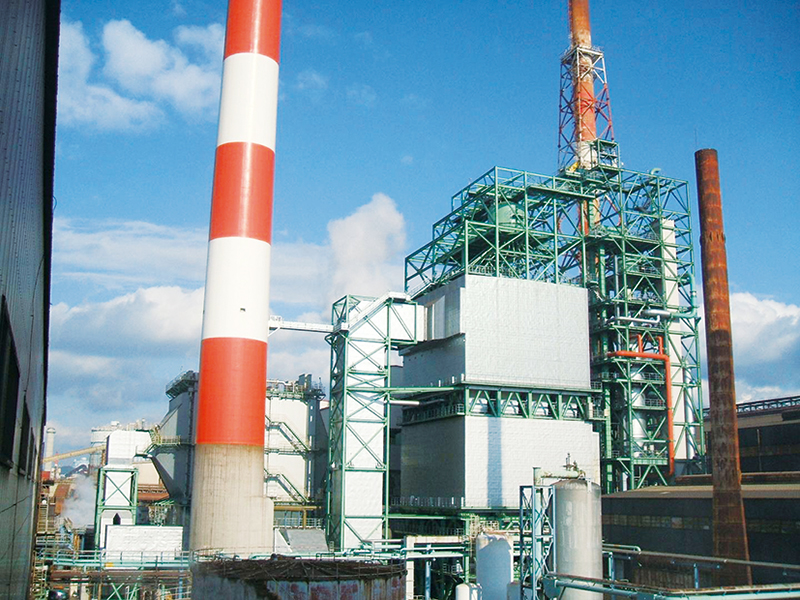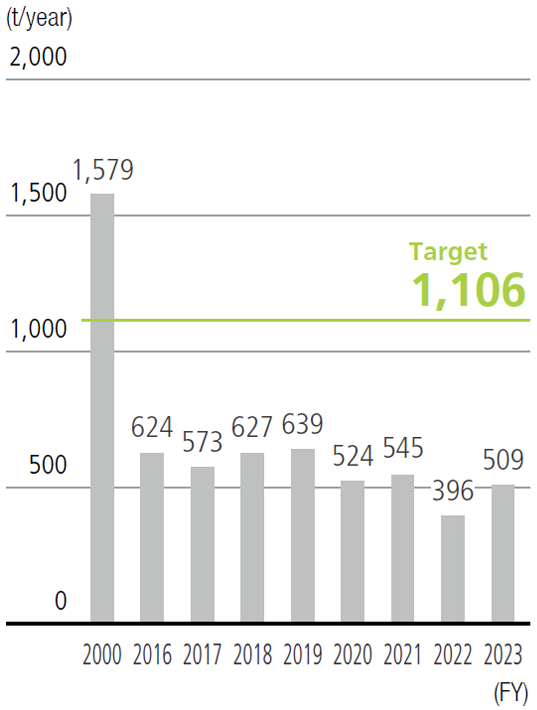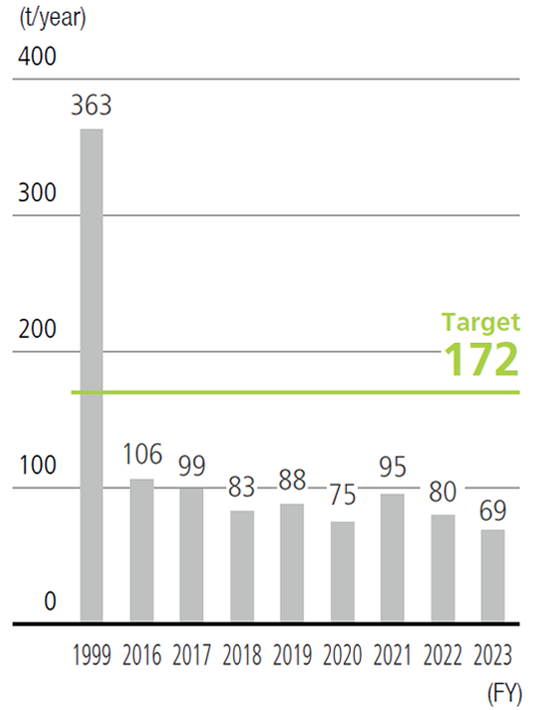Management of discharged chemical substances
Comprehensive management of discharge
Nippon Steel appropriately manages and tries to improve the production, handling, and discharge or disposal of chemical substances in accordance with the Chemical Substance Management Law1, Chemical Substance Evaluation and Regulation Law2, and other laws concerning the management of chemical substances as well as the procedures employed. According to the targets of the Chemical Substance Management Law, we thoroughly manage the material balance, which includes the amount of chemical substances handled, the amount discharged to the environment, disposable amount, and the amount used as products. We properly submit notifications in fiscal 2024 in accordance with the revised Control Law that came into effect on April 1, 2023. Similarly, we take care in managing the Volatile Organic Compounds (VOC3), which are said to cause photochemical oxidants and suspended particulate matter. In complying with the Chemical Substance Evaluation and Regulation Law, we identify and provide notification of the amounts of production and sales of the targeted chemical substances.
Nippon Steel also takes the lead in promoting use of alternatives to using steelmaking materials and equipment that contain hazardous materials such as polychlorinated biphenyl (PCB) and mercury. According to safe handling standards, we systematically replace or dispose possibly hazardous parts and materials, given the time limit for disposal or the expiration date, stipulated for each area.
1 An abbreviation of the Act on Confirmation, etc. of Release Amounts of Specific Chemical Substances in the Environment and Promotion of Improvements to the Management Thereof (Law concerning Pollutant Release and Transfer Register/PRTR)
2 An abbreviation of the Act on the Evaluation of Chemical Substances and Regulation of Their Manufacture, etc.
3 Volatile organic compounds (VOC): Organic chemical compounds emitted into the atmosphere in the form of gases, which are considered to be the source of undesirable airborne particles and photochemical oxidants, which became subject to control under the Air Pollution Control Act of 2004, as amended.
Management of discharge based on the Chemical Substance Management Law
In 1999, two years before the enforcement of the Chemical Substance Management Law, Nippon Steel began surveying chemical substances according to the voluntary control manual developed by the Japan Iron and Steel Federation (JISF). At present, in compliance with the Chemical Substance Management Law, we monitor 515 chemical substances and try to control their emissions and improve the way we manage it.
In fiscal 2023, there were 50 target substances for notification and the emission amount was 309 tons into the atmosphere and 25 tons to public water areas, while the disposal amount of mostly metals including manganese and chrome, and silicon carbide used for bricks and grindstone to outside of the works was 104447 tons in aggregate.
Every year, data is compiled by each works and experience in carrying out reduction measures is shared with other works. In addition, the compiled results are disclosed on our website.
We have similarly been working on reducing volatile organic compounds (VOCs). In fiscal 2009, the 30% reduction target relative to fiscal 2000 was achieved. Since then, low discharge levels have been maintained.
Voluntary priority control of select chemical substances
- Dioxin
Some of our facilities, such as sintering facilities and incineration facilities, are a source of emissions of dioxins into the atmosphere. All these facilities have conformed to the emission concentration standard and have achieved levels of emissions far below the voluntary reduction target, based on the JISF guidelines, relative to fiscal 1997.
- Benzene, tetrachloroethylene, dichloromethane
We developed a voluntary reduction plan of hazardous air pollutants specified in the environmental standard, which we handle. As a result of our systematic undertaking, we have already reached the targets for all three pollutants and have been maintaining the target levels.

No.5 sintering flue gas desulfurization and denitrification facilities
(Kansai Works Wakayama Area)
Appropriate treatment of industrial waste
Emission of VOC

Benzene

